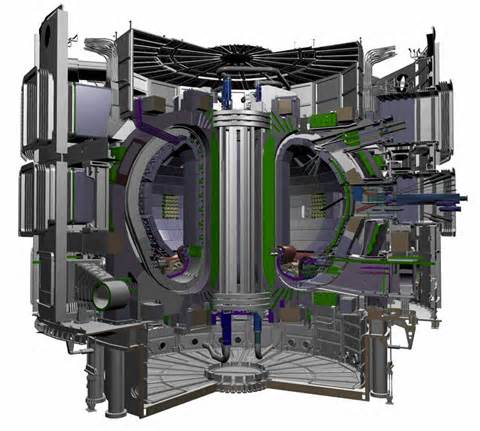3D Printing A Nuclear Reactor
Nuclear fusion, the same process that produces energy from the sun, has long been heralded as the daddy of all energy sources, but has always been just out of reach. Instead of splitting the nucleus of an atom like nuclear fission does, fusion uses colliding nuclei to produce sustainable, green energy in large quantities.
At the forefront of research into nuclear fusion is the International Thermonuclear Experimental Reactor or ITER, which is under construction in St. Paul-lez-Durance, France. ITER will be the worlds most expensive and complex scientific instrument ever build, dwarfing the likes of the Large Hadron Collider or the International Space Station. Its goal is to demonstrate workable fusion energy, a goal stretching back decades.
To reduce the massive cost and keep the projects cost within budget, the US ITER team at Oak Ridge National Laboratory has begun 3D printing many of the prototypes and concepts. This will allow them to more efficiently design and re-engineer components to suite ITER’s rigorous demands. 3D printing also brings CAD models into reality, giving designers and engineers a physical model to hold.
ITER engineer Kevin Freudenberg explains 3D Printing’s benefits and how it compares to other design tools, “Now for pennies instead of tens of thousands of dollars, we can have impact right away with 3D printing. It lets us see what the part actually looks like. On 3D CAD displays, you can’t feel the shape of an object. You just see it. Many people have trouble seeing 3D projections or find them tiresome to view over time. With the 3D printed objects, you can run your finger over the surface and notice different things about the scale and interfaces of the component.” He adds, “We went to a vendor meeting recently. We looked at line drawings for a minute, and then the vendors spent hours looking at and discussing the 3D parts. Most of the meeting was spent talking about the parts. Having something in your hand that is tactile can show what machine processes and best practices to use in manufacturing.”
Mark Lyttle, one of the engineer’s behind ITER’s pellet injection and plasma disruption mitigation systems had this to say, “It’s a lot more time consuming and expensive when you find that mistake in a metal prototype than it is in a 3D printed component. 3D printing is very low cost. With metal, you may have to start over if you can’t re-machine it.” He added, “On the screen, some components don’t look especially bulky. But when you make it in metal, it will be a hunk of material that is too heavy and hard to handle. When you have a physical model, it is easier to spot opportunities to save material and make the design more efficient and the manufacturing less expensive.”
The benefit of 3D printing is the ability to easily scale prints. ITER’s central solenoid weighs a thousand tonnes and is 60 foot high, far to big to print at full size so engineers printed at what they call “toy scale”. Smaller components can be printed at one to one scale, like the fast gas valve for the disruption mitigation system.
It’s interesting to see two potentially game changing technologies brought together on one project. On one hand, 3D printing has the ability to let us create almost anything we desire, and on the other, nuclear fusion could let us produce almost limitless amounts of clean energy.
Source: Techfragments



